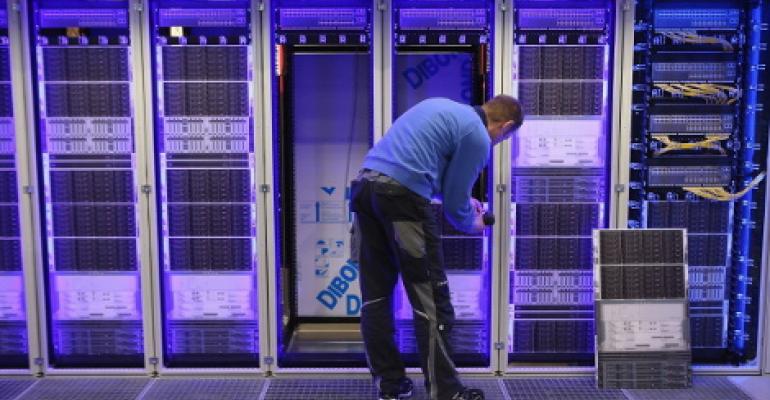While top data center markets like New York, Silicon Valley, and Dallas get most of the attention, a lot of growth is taking place in markets considered secondary. Markets like Seattle, Portland, Phoenix, and, more recently, Reno, Nevada, are seeing a lot of multi-tenant data center construction and take-up.
There are market-specific characteristics at play, but core demand drivers are the same across the board, according to a recent report on the North American data center market by Jones Lang La Salle, a commercial real estate firm. Companies want to focus on their core business instead of spending resources on data center management. They want to take advantage of new data center technologies, eliminate overhead, and increase IT operations efficiency.
Activity Picking Up in Pacific Northwest
One particularly active tier-two region this year has been the Pacific Northwest. From Seattle to Portland, including Oregon’s high desert plain, the region has cumulatively absorbed tens of megawatts of multi-tenant data center capacity year to date, according to JLL.
Notable data center deals closed this year include a lease of a 200,000-square-foot building by colocation provider ViaWest from developer Majestic Realty in Hillsboro, Oregon, for an 18 MW data center, according to JLL’s report; Server Farm Realty’s 8 MW deal with CenturyLink in Moses Lake, Washington; and a 1 MW Costco lease at a Sabey data center in Washington state.
Whether the different sub-markets of the region should be treated as a single “mega-market” is controversial in data center real estate circles, but even if taken individually, “all three of those markets are seeing activity in different ways,” Bo Bond, managing director at JLL and one of the report’s authors, said.
Seattle has always been and continues to be an important West Coast market, and there continues to be a lot of demand there, Bond said. Central Washington is also an established market, while Portland is a newer, emerging market, he said.
Reno – a Brand New Data Center Market
Another even newer emerging data center market is Reno, where Apple’s data center was followed by a massive build by Las Vegas-based data center provider Switch.
The company is building what it says will be the world’s largest data center by space, power, and cooling capacity. eBay has signed as the anchor tenant.
Managed services provider Rackspace has been exploring Reno as a potential location of its next data center, and Tesla Motors, which is building a battery plant near the Switch site, has included a data center in its construction plans.
Reno has never been known as an active data center market before, but Nevada has a lot to offer to data center operators, including robust internet infrastructure, a reliable electrical grid, a business-friendly political environment, and proximity to California.
Whether Reno’s data center market will continue to grow remains to be seen, Bond warned. It’s a market to watch, but it’s also a market that could, potentially, hit its peak quickly.
An example where this has happened is San Antonio, Texas, he said. San Antonio was in vogue several years ago, after several big corporations moved in, but eventually slowed down and hasn’t picked up since.
Will Houston’s Healthcare Industry Embrace Colocation?
Another Texas market, Houston, has been growing at a healthy clip this year, according to JLL. Demand there is driven primarily by oil and gas companies, many of which have corporate offices in Houston. Energy companies are leveraging technology in drilling and exploration efforts, which drives take-up of data center capacity in the market.
But Houston also has a big community of healthcare organizations, and Bond expects this industry vertical to start taking multi-tenant data center space much more actively than they have in the past. The healthcare industry is one of the last holdouts, continuing for the most part to operate data centers on hospital campuses and in medical centers. “But it’s going to break sooner or later,” Bonds said.
Other notable demand drivers in Houston are banking and financial services, telecommunications, insurance, retail, and e-commerce, according to the JLL report.
Minneapolis-St. Paul Sees Glut of Supply
Also notable is Minneapolis-St. Paul, where there is more multitenant data center space available today than ever. New companies recently entered the market, and existing providers have expanded, resulting in a market with about 250,000 square feet of vacant data center space, according to JLL.
The good news for Minneapolis-St. Paul is that demand for data center capacity there is growing quickly. “Absorption has steadily increased with deals ranging from single racks to 1 MW during the last four quarters,” the report’s authors wrote.
JLL expects the region to continue being a tenant’s market throughout 2016, with downward pressure on pricing until absorption rates catch up with supply.
Consolidation Changes Market Shape
Real estate dynamics aside, one of the most important trends shaping the North American multi-tenant data center market this year has been consolidation. Some of the biggest data center providers in the country have been expanding their geographic reach as well as the set of services they offer.
Companies like QTS, CyrusOne, and Digital Realty have been diversifying their product portfolios, often via acquisition. Digital Realty made a big bet on retail colocation and interconnection services with its $1.9B acquisition of Telx, which closed last week; CyrusOne entered the New York market with its acquisition of Cervalis; and QTS bought Carpathia Hosting, gaining a massive managed hosting service and more than doubling the size of its data center portfolio.
“We expect industry consolidation will change the market by shrinking the overall number of providers and positioning those left to offer greater geographic coverage and service options,” JLL researchers wrote.





